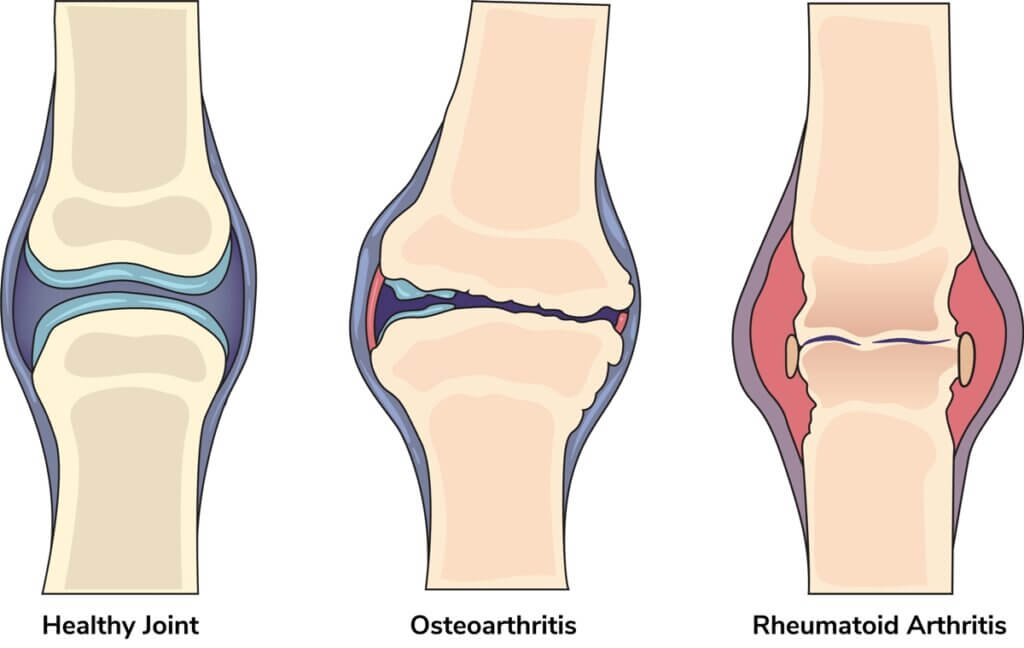Definitions
Arthritis is an umbrella condition for approximately 100 different types of diseases, including osteoarthritis and rheumatoid arthritis.
According to the World Health Organisation (WHO), osteoarthritis is defined as a degenerative process affecting the body’s joints, resulting from mechanical and biological disorders that alter the balance between the creation and degradation of articular cartilage; stimulating the growth of subchondral bone and with the presence of chronic synovial inflammation.
According to the WHO, rheumatoid arthritis is a chronic inflammatory autoimmune disorder that can affect not only the joints, but also other structures such as the skin, eyes, lungs, heart and blood vessels.
Unlike the wear-and-tear damage of osteoarthritis, rheumatoid arthritis affects the synovial membrane of the joints, causing a painful swelling process that can eventually lead to bone erosion and joint deformity.

Differences
- Arthritis, inflammation of the synovial membrane. This is a tissue that lines the inside of the joints and reduces friction between the cartilage and other joint structures. With arthritis, the synovial fluid contained in the synovial membrane leaks out of the joint instead of being reabsorbed as is usually the case, resulting in constant wear and tear on the bone and cartilage.
- Osteoarthritis, degeneration of the articular cartilage. This is a tissue that covers the bone and helps to reduce the wear and tear caused by use. Over time, the cartilage wears away until it disappears, so that the bones rub against each other, causing pain and loss of joint flexibility.
- Structures affected: in arthritis it is the synovial membrane and in osteoarthritis it is the articular cartilage.
- Causes of onset: in the case of arthritis it is autoimmune and in osteoarthritis a combination of wear and tear and/or age.
- Onset of pain: in arthritis it is constant and in osteoarthritis it usually improves with rest, but worsens with movement.
- Typical signs: arthritis-inflammation; osteoarthritis-degeneration.
- Diagnostic tests: for arthritis, a blood test and imaging tests (MRI) are necessary; for osteoarthritis, an imaging test (X-ray or MRI) is necessary.


